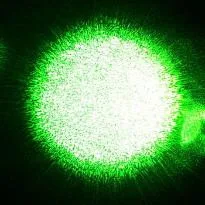Just before Christmas, the Laser Illuminated Projector Association (LIPA) released to the public its Recommended Practice: Measurement of Speckle in Laboratory Conditions. It is a guide for laser projector makers, installers, and theater operators to measure and compare this common laser attribute caused when coherent light bounces off a rough surface.
The release of this document is a big deal as it culminates a lot of effort to nail down this thorny issue as there are multiple ways to measure speckle – all producing different results. The other big challenge has been to find a measurement method that produces results that correlate with what the eye sees.
LIPA says the recommended practice is the first of its kind to detail procedures and equipment for obtaining a reference figure, and is being made available by LIPA at no cost as an industry service on the LIPA website at www.LIPAinfo.org/speckleRP.
Laser-projector manufacturers are using very effective optical designs to virtually eliminate visible speckle in their products,” noted Pete Ludé, the chairman of the working group tasked with creating the document and senior vice president of innovation at RealD. “But just like luminance, color, uniformity and contrast, speckle can affect the perceived image quality, so it is useful to consistently measure it using a method agreed upon by industry experts. Projector customers, including cinemas and other public venues, will be pleased to have this recommended practice available and we look forward to their feedback through the technical committees already in place.”
The document was drafted over two years by 25 experts from the laser, optics and projector communities contributing their time and knowledge. This initial document focuses on a measurement under laboratory conditions. To the extent that the projector and screen under test are representative of an actual theater installation, it is expected that the lab measurement will correlate well with performance in the theater. The recommended practice primarily focuses on the requirements of the projector, screen, and the camera used for the measurement.
“The team has created a procedure that is accurate, repeatable, inexpensive, versatile, and returns a clear measurement,” said Matt Cowan, co-founder and CTO for Entertainment Technology Consultants and document editor. “Our intent was to design a metric that correlates with human perception,” added Rick Posch, principal at CR Media Technologies. “We will continue to build our understanding of how human vision detects speckle, and ultimately arrive at a threshold of acceptability to sustain excellent image quality in cinema.” (CC)

